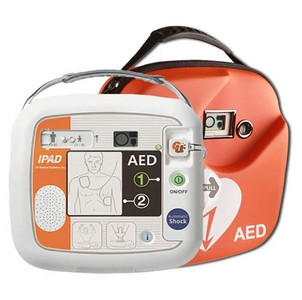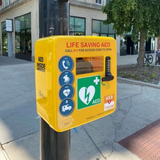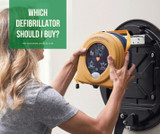Advice When Purchasing Defibrillators for Schools
Cardiac arrest is when the hearts natural beat is disrupted and sent into fibrillation. This is not only life-threatening but can affect people of any age without warning. If this happens, early cardiopulmonary resuscitation (CPR) and prompt defibrillation can help save a person’s life. In order to provide accurate and effective treatment defibrillators can be used.
As cardiac can affect anyone, even school children, the Department for Education is encouraging all schools to consider purchasing an automated external defibrillator (AED) as part of their first-aid equipment. Having this equipment will provide a safer learning environment and ensure that any cardiac arrest suffers receive the instant treatment that they need.
Here at Risk Assessment Product, we want to help schools make the best decisions when it comes to defibrillators, which is why we have collated the following advice:
Selection
There are many AED’s available on the market, making choosing one that is right for your school a difficult choice. We suggest a device that provides both vocal and visual instructions as some may find these easier to follow. For children aged 1–8, it is recommended that AEDs have a paediatric mode or is fitted with paediatric pads. Some of the leading brands of defibrillators include CU Medical, Primedic and Zoll.
Safety
When it comes to making the decision about if to purchase an AED for your school or not, you don’t have to worry about safety. Thanks to modern technology, AED’s monitor the heart rate of the person that they are connected to, from these results they will conclude if the patient is in cardiac arrest. They will then only provide a shock if one is required, making the devices extremely safe.
Location
When someone is suffering from cardiac arrest, immediate attention is crucial. Which is why AEDs within a school should always be located in a position that is quick and easy to access in the event of an emergency. So, don’t just place your new piece of first aid equipment anywhere, think about its location strategically.
Inform
When an AED is purchased and installed, whether, in a school or office building, it is important that the local ambulance service is informed of the make and location of the AED, and any access arrangements. This ensures that operators and ambulance crews can provide the correct advice and treatment to whoever called 999.
Training
AED’s have been specifically designed to be used for those with no, or very little, medical knowledge thanks to their simple and easy to follow instructions. Thus, training isn’t necessary, however educating staff of what a defibrillator is and how it should be used is suggested.
Containment
In order to keep your AED in the best possible condition and protected from any accidental damage, specially designed wall mount or cabinet can be used. These accessories also help schools conveniently place the machines, increase their visibility and provide instant recognition.
Upkeep
AEDs will undertake regular self-tests and if a problem is detected, they will show this by a warning light or signal. As a school, you should ensure that there is a procedure in place for AEDs to be checked for such a warning on a regular basis.
If you are looking for an AED for your school, you can find a large selection of leading brands that are available at discounted prices on the Risk Assessment Products website.
Recent Posts
-
Empowering Communities: The Lifesaving Impact of CPR on Restart a Heart Day
Every year, on and around October 16th, an important event takes place - Restart a Heart Day. This a …16th Oct 2023 -
Which home defibrillator?
80% of all out of hospital cardiac arrests occur at home. Defibrillators are often available in loca …4th Dec 2022 -
Which defibrillator should I buy?
There are many defibrillators available on the market and it can become overwhelming knowing which o …4th Nov 2022




